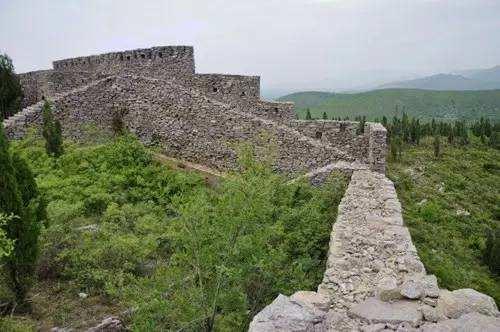
Emperor Qin Shi Huang conceived of the Great Wall of China. Around 220 BC, Qin Shihuang, who unified the world, connected some intermittent fortifications built earlier into a complete defense system to resist invasion from the north.
In the Ming Dynasty (1368-1644 AD), construction continued, making the Great Wall the longest military facility in the world. Its cultural and artistic value is comparable to its historical and strategic importance.
Overview Great Wall of China:
The Great Wall is a historic defense project that required the most labor and the longest time to build in both China and the entire world.
It has been constantly built for almost 2,000 years, beginning in the seventh or eighth century BC. It is distributed over the vast land of northern and central China, with a total length of more than 50,000 kilometers. “.
Such a massive project is unique not only in China but also in the world. Therefore, hundreds of years ago it was listed as one of the seven wonders of the medieval world along with the Colosseum and the Leaning Tower of Pisa.
The history of the construction of the Great Wall The history of the construction of the Great Wall can be traced back to the Western Zhou Dynasty in the 9th century BC.
Related : Genghis Khan “Butterfly Wings” Responsible 10% Population
The Zhou Dynasty was in order to defend against the attacks of the nomadic tribes in the north. A continuous row of castles, “Leh Cities”, were built for defense.
In the 7th and 8th centuries BC, during the Spring and Autumn Period and the Warring States Period, in order to compete for hegemony and defend each other, the princes of various countries built the Great Wall on their borders according to their respective defense needs.
Great Wall:
The earliest one built was the Chu in the 7th century BC. Later, the Qi, Han, Wei, Zhao, Yan, Qin, Zhongshan and other vassal states, large and small, built the Great Wall one after another for self-defense.
At this time, the characteristics of the Great Wall were that the east, south, west, and north directions were different, and the length was shorter, ranging from a few hundred kilometers to 1,000 to 2,000 kilometers.
In order to distinguish it from the Great Wall later built by Qin Shihuang, historians call it the “Pre-Qin Great Wall”.
In 221 BC, Qin Shihuang annihilated the princes of the six countries and unified the world, ending the disputes in the Spring and Autumn Period and the Warring States Period, and completing the first feudal centralized unification of the country in Chinese history.
In order to consolidate the security of the unified empire and the stability of production, and to defend against the intrusion of the powerful Xiongnu nomadic slave owners in the north, the Great Wall was overhauled.
In addition to using the foundation of the original Yan, Zhao, and Qin parts of the Northern Great Wall, many parts were added and expanded, “starting from Lintao in the west, ending in Liaodong in the east, and winding for more than 10,000 miles.” Since then, it has been known as the Great Wall.
Ming and Ming dynasties:
Great Wall in the three dynasties of was the largest, reaching 5,000 kilometers or 10,000 kilometers. Looking at the ruling ethnic groups that built the Great Wall, in addition to the Han people, many dynasties that ruled China from ethnic minorities also built the Great Wall, and more so than those ruled by the Han people.
During the Kangxi period of the Qing Dynasty, although large-scale construction of the Great Wall stopped, the Great Wall was later built in individual places.
It can be said that construction of the Great Wall has not stopped for more than 2,000 years from the Spring and Autumn Period and the Warring States Period to the Qing Dynasty.
Its function is to serve as a facility for transmitting military information. Beacon towers, a tool for transmitting information, have been around for a long time.
When the Great Wall was first built, it was well utilized and gradually improved, becoming the best way to convey military information in ancient times.
The method of transmission is to burn smoke during the day and raise fire at night. Because the sun is strong during the day, the fire is difficult to see, but the fire can be seen from a long distance at night.
scientific and rapid:
This is a very scientific and rapid method of transmitting information. In the Ming Dynasty, the sound of cannons was added while burning smoke and raising fires to enhance the alarm effect and make military information spread thousands of miles in an instant.
In the absence of telephones and radio communications in ancient times, this method of transmitting military information could be said to be very fast.
The layout of the beacon tower is also very important.
The beacon tower was called pavilion, pavilion tunnel, beacon fire and other names in the
Han Dynasty, and was called Yandun in the Ming Dynasty.
In addition to conveying military information, it also protected the safety of envoys coming and going.
provided food and accommodation, and supplied horses with food and other services. System of the Great Wall.

